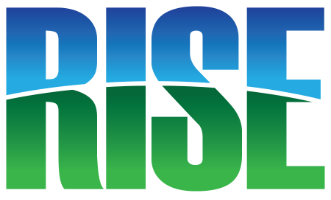Glyphosate
What is glyphosate?
Glyphosate is the active ingredient in the most widely used weed control (or herbicide) products on the market. Once applied and absorbed by a weed, glyphosate travels to the weed’s roots where it targets and blocks the specific enzyme necessary for weed growth. As the weed withers to the ground, any remaining glyphosate is broken down in the soil into naturally occurring substances like carbon dioxide and phosphate.
Is glyphosate safe?
The U.S. EPA rigorously reviews all pesticide products before they are made available for sale and use; glyphosate is no exception. In fact, it’s one of the most thoroughly evaluated herbicide products in the world. In addition to the U.S. EPA, regulatory agencies in more than 160 countries have reviewed and approved glyphosate-based products.
The EPA has determined that glyphosate, like other approved pesticide products, poses no unreasonable risk to people, wildlife or the environment when used according to labeled instructions.
Does it pose a risk to human health?
The enzyme glyphosate targets and destroys is only found in plants, not humans or animals, and its use is carefully regulated. The U.S. EPA and other agencies across the world set limits on how much herbicide can be used and the intervals at which the herbicide can be sprayed on the plants. These are based on scientific data that determine the breakdown of the herbicide on the plant material itself, as well as degradation rates in the soil.
Does glyphosate exposure increase the risk of cancer?
Glyphosate is one of the most widely used and thoroughly evaluated herbicides in the world. Many scientists have conducted studies and field research with glyphosate herbicides and published their results in peer-reviewed scientific journals. The overwhelming consensus is that glyphosate, when used properly, poses no risk of adverse effects to people, wildlife or the environment.
If that’s the case, why did the International Agency for Research on Cancer classify glyphosate as a carcinogen in 2015?
The IARC classification did not consider years of science-based analysis by regulatory agencies around the world. The IARC review looked selectively at data to arrive at its classification. No regulatory agency, including the U.S. Environmental Protection Agency, the European Food Safety Authority and the World Health Organization, considers glyphosate to be a carcinogen.[1]
What is the benefit of using glyphosate?
Maintaining green spaces, homes, lawns and playing fields protects a homeowner, school, city or athletic complex’s investment in them. Reliable weed control keeps outdoor spaces useable, playable and enjoyable. Glyphosate and other herbicides also help control invasive weeds, which can compete with native plants and negatively impact the local ecosystem.
The green industry
There are more than 900,000 lawn care, landscape and grounds keeping professionals[2] working for more than 475,000 small businesses[3] that rely on products containing glyphosate to keep parks useable, fields safe for play and residential and business landscapes properly maintained. Removing glyphosate from the weed control toolbox takes away a reliable, cost-effective option, especially for land management in share spaces across the state. During the current state budget crisis, this could have a significant impact on municipalities and local services charged to take care of public outdoor spaces.
Other Tools:
- The text from this page is available in PDF format and a Word Doc that you can customize with your company logo and information.
- Read comments from RISE to the FIFRA Scientific Advisory Panel on Glyphosate
- Quotes from Regulatory Authorities on Glyphosate
- Find your state legislators here and write to them about the importance of keeping Glyphosate available.
[1] https://monsanto.com/company/media/statements/glyphosate-report-response/
[2] https://www.bls.gov/oes/current/oes373011.htm
[3] https://www.lawnstarter.com/lawn-care/lawn-care-industry-statistics
